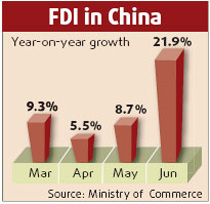Like many other product categories in China, the credit card industry is booming.
Today it is estimated that more than 40 million credit cards are in use in China, compared with less than 3 million in 2003.
The main drivers of this upsurge are obvious - economic growth, income increase, the development of organized trade and urbanization. These are not unique to credit cards and are also the drivers of many other product categories.
Despite the growth, in today's context there are several factors that the industry needs to worry about. How long will this boom last? How do I deal with fierce competition? How do I make the consumer spend more on the card? And how do I retain the consumer? Most importantly - how do I make a profit in this market?
Most of these questions are related to the challenge of establishing credit cards as a brand in the market. The market has already accepted the credit card as a product, but when there is no loyalty, when consumers easily abandon one credit card in favor of another for a free gift, it implies they have not accepted a particular credit card brand.
And until that is achieved, the industry will always be faced with a fickle consumer. By building loyalty with a select group of consumers, the companies will also increase their profitability. So one of the biggest challenges facing the industry today is how to establish credit cards as a brand in China.
Consumer needs
Branding is a challenge for credit card operators wanting to differentiate their product from others. The starting point is establishing a very good understanding of consumer needs. With over 40 million cards, and growing exponentially, it is unlikely that the market will be homogeneous. Credit card companies need to segment the market, decide which segments they want to cater to and offer specially designed and targeted products for each segment.
While this sounds like the logical and almost obvious thing to do, there are several considerations that need to govern the marketers' actions.
When considering consumer needs for credit cards, the most obvious is the basic functionality including wide acceptance, high credit limit, low or no annual fees and so on. However, consumer needs for credit cards are complex and operate at several different layers. At the outermost layer, there are the functional needs. However there are two additional layers of consumer needs that need serious consideration. Credit cards can be a social status indicator. Card branding enables a consumer to express their social status: successful, affluent, modern or even fashionable. Credit cards need to exude the right social imagery for the right segment of customers. In doing that, the banks need to be innovative and need to go beyond the obvious imagery of status and class, and the corresponding clichd offer of gold and platinum cards.
Green cards
For instance, in the current context, environmental awareness and consciousness is becoming so important, that there is likely to be an excellent market for not just a gold or a platinum card - but a green card - a card which supports environmental projects, and projects the consumer as an intelligent and responsible citizen. Deep down we as consumers have strong emotive needs, and look to brands to satisfy these needs. These needs could be a need for control, a need for thrills and excitement or a need to bond or feel protected. Again by appropriately segmenting the customers, the banks need to create the right image and personality for their brand, which fits in with the emotive needs of the consumer segment they are targeting.
The banks also need to look innovatively at the functional needs. Like other visible products, credit cards can be a reflection of the user's personality. The card, therefore, not only needs to help the consumer buy things, but it also needs to be an attractive and interesting piece of plastic that the consumer is happy to carry and exhibit. Normally one would not associate looks or fashion with credit cards - but the fact is that by having the right kind of appearance, a card could develop strong identification and bonds with consumers.
Lastly, sometimes functional needs can be merely surrogates for emotional needs. For instance, if you talk to Chinese credit card consumers, a high credit limit is invariably mentioned as an important requirement in a card. However, when you try to probe further, it emerges that the credit limit is actually a reflection of their status and self-recognition and also a source of security. The implication is that the marketers need to cater to the underlying true needs - and if a high credit limit is a problem, they can cater to the hidden emotive need in a different way.
Retaining customers
Today credit card customers look at the card as a piece of hard plastic, which helps them buy goods and gives them rewards. The evaluation of brands is also on these parameters, and they will happily discard one in favor of another, if it promises better gifts or more rewards. Credit card issuers have not invested much to reach to the consumers and establish a broader and stronger relationship, which is based on an understanding of their needs in all its dimensions. The success of this business in China critically hinges on the credit card issuers' ability to develop a bond with the consumers, a relationship that extends beyond the functional attributes and embraces the emotive needs.
(China Daily December 12, 2007)


